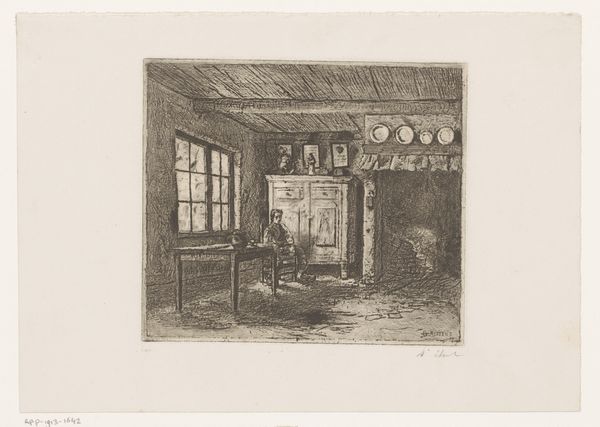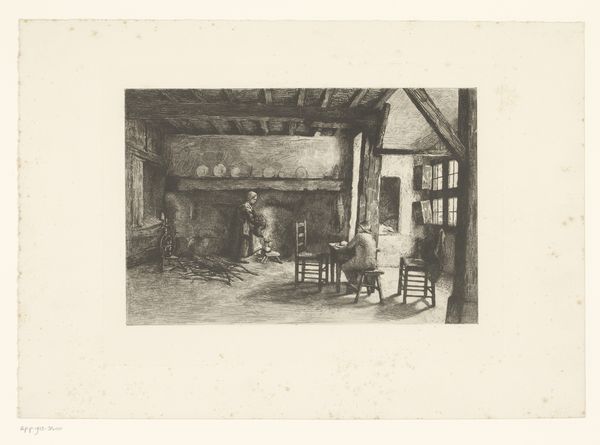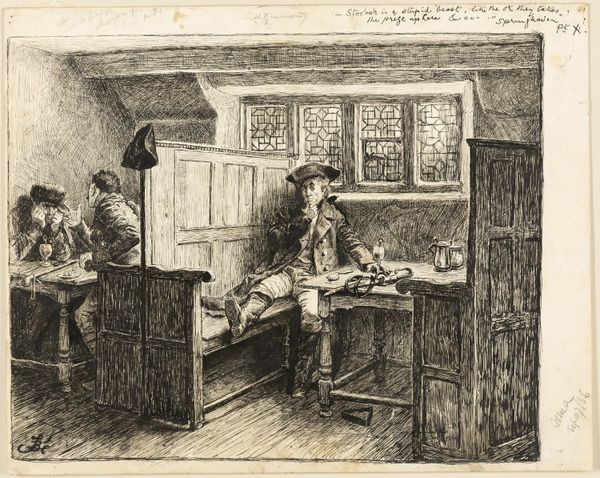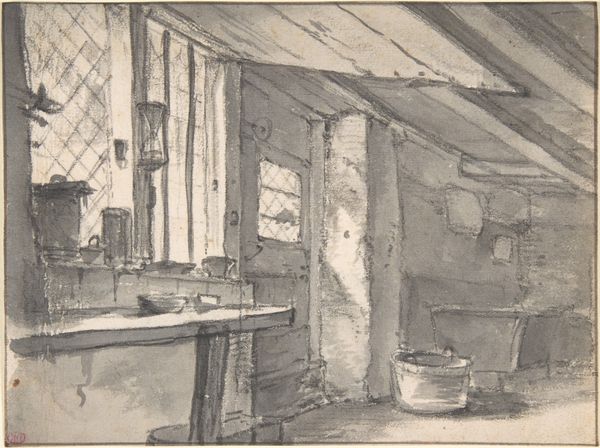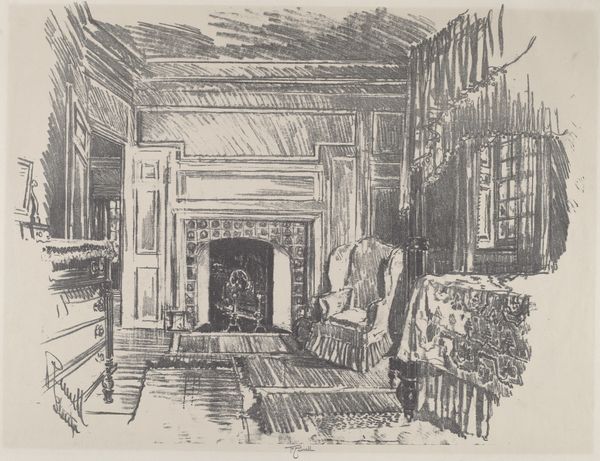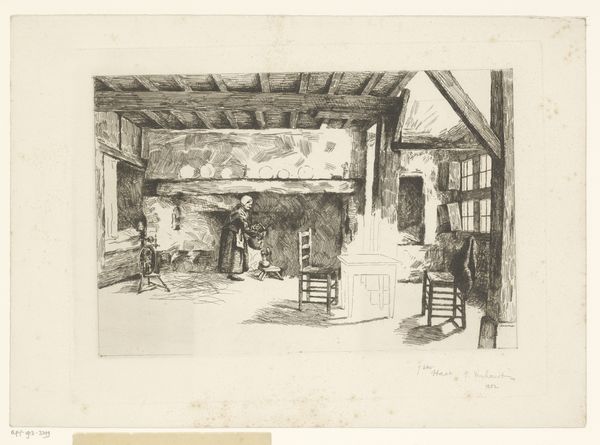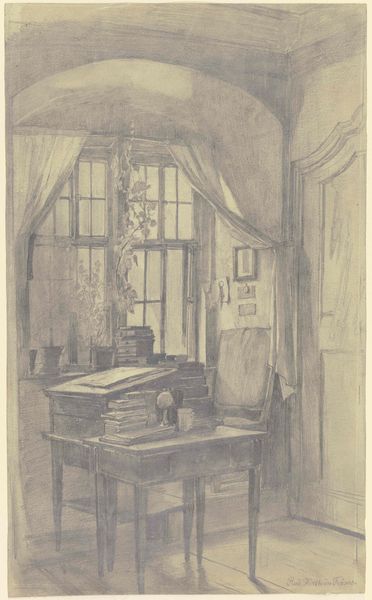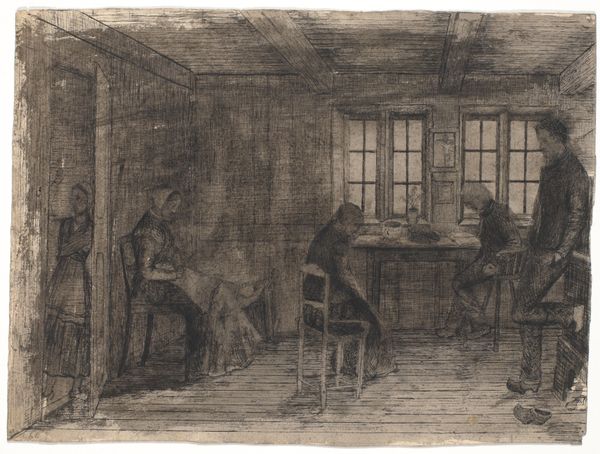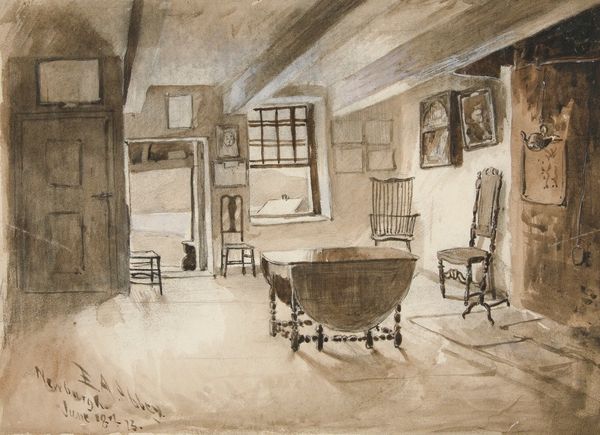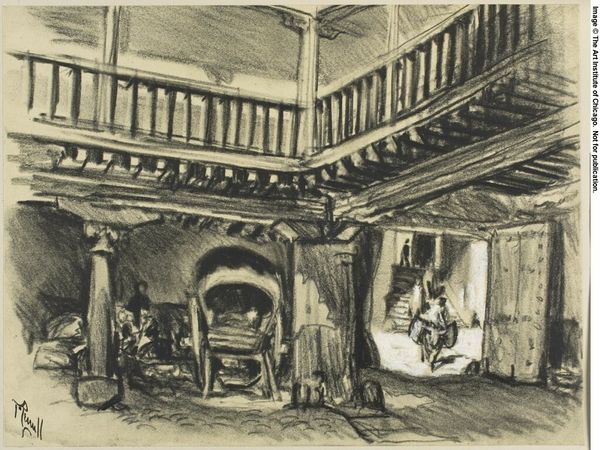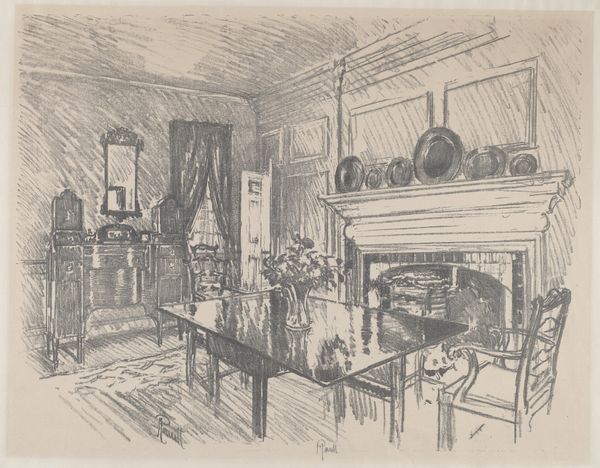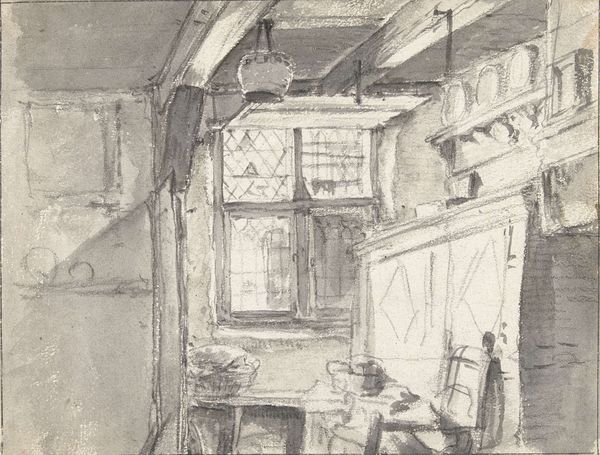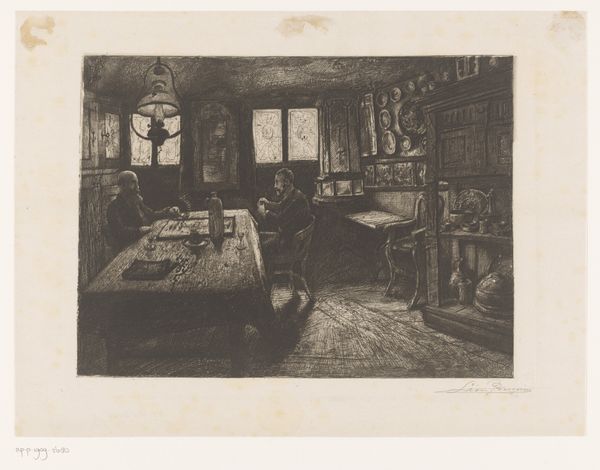
drawing, charcoal
#
drawing
#
charcoal drawing
#
charcoal
#
realism
Dimensions: 19 1/8 x 23 1/4 in. (48.58 x 59.06 cm) (sheet, framed)
Copyright: Public Domain
Curator: I see a hushed, expectant sort of feeling here. Like history holding its breath. Editor: Indeed. What you are sensing might be the weight of artistic legacy. This charcoal drawing by Léon-Augustin Lhermitte, made in 1896, depicts none other than Albrecht Dürer’s room in Nuremberg. Curator: Aha! That's why it feels like a sanctuary of sorts, doesn't it? I can almost smell the ink and hear the scratch of his pen, see him pacing... Did Lhermitte visit as a pilgrimage, a devotional act for an artist gone by? Editor: Well, think about what it meant to depict an artist's space at the end of the 19th century. The rising nationalism of the time placed Dürer as a central figure in a specifically German artistic tradition. This piece uses charcoal to create very defined highlights and areas of darkness. It becomes an evocation of German artistic power and history through Lhermitte's contemporary, yet slightly romanticized lens. Curator: So, more than just capturing the room, he's also invoking the *idea* of Dürer... It makes me consider how we, as artists, are so intertwined with those who came before. Every stroke, every choice—we're conversing with history. Looking at the shadows, you can almost see how much thought and inspiration Lhermitte found in it. There's a silent dialogue there, echoing through the ages. Editor: Yes, and the choice to use charcoal amplifies the dramatic lighting. Notice how the heavy, darkened foreground pulls the viewer's eye back into the lighter space of the windows—the artist at his desk in his pool of light, ready for inspiration to strike. That almost theatrical use of chiaroscuro was so common throughout Europe at the time! Lhermitte isn't just showing us a room; he's constructing a national artistic origin story. Curator: It's less a simple drawing then, more of a loaded staging... a constructed memory, layered with reverence and intention. That does add another fascinating layer. So much contained within the texture of the charcoal, the angles of the light. I love discovering new dimensions in the past through the visions of others. Editor: I completely agree, uncovering these layers truly shifts our perspective. It shows us that images of the past can simultaneously reflect and shape our understanding of the present.
Comments
No comments
Be the first to comment and join the conversation on the ultimate creative platform.
